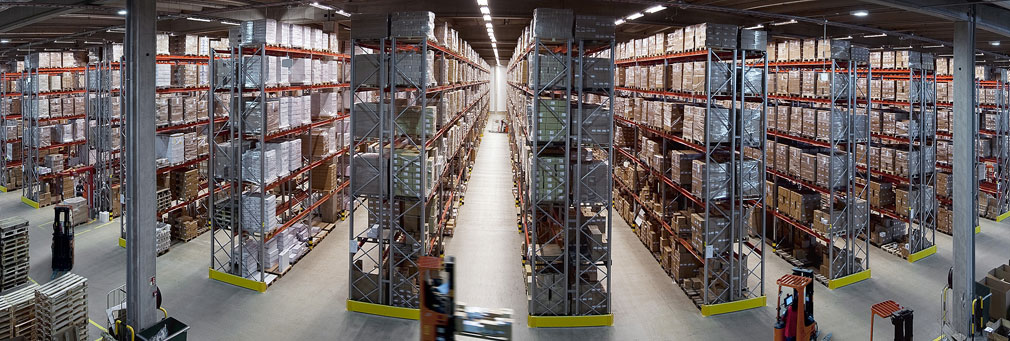Protecting your Racking Safeguards
The use of pallet racking, while bringing huge benefits in terms of storage and logistics, carries with it significant risks to both employers and employees. There has been a reported increase in racking collapses in recent years and with systems often built higher than two storey buildings and made to store items with a cumulative weight of several tonnes, any racking collapse can be catastrophic for a business. Employees can suffer severe or fatal injury, employers can be prosecuted for insufficient safety on site, and the stock, operations and reputation of a business can be seriously damaged.
To reduce the risk of racking collapses it is vital to be aware of safe operating procedures dealing with racking and associated storage equipment. These should be used in conjunction with making certain that the racking system itself is properly installed and used, as well as being regularly maintained and inspected.
Guide to Safe Operating Procedures
Information on the safe use, installation and maintenance of a racking system can normally be found in the manufacturers operation and maintenance (O&M) manual. This document will assist in compliance with the Provision and Use of Work Equipment Regulations, 1998 (PUWER). The O&M manual will often recommend regular inspections of the racking are conducted and form part of risk-management plan. CSI can assist with this by conducting SEMA approved rack inspections.
Essential Actions:
- Clearly display load notices All racking should have adequate signage with information on the safe operating loads of the system fixed in a clear position (e.g. on end frames near entry aisles).
- Provide full training for operators Anyone using racking, forklift trucks and/or associated equipment should be suitably trained with appropriate licenses and qualifications.
- Report any damage and take sufficient remedial action Inspect and report any damage to the system and conduct proper repairs where appropriate. If damage is significant then offload the affected area and isolate until repairs are performed.
Factors affecting the short and long term safety of racking:
- Site specific requirements Drivers should be trained in the in the proper use of the forklift, racking and how these two influence each other, along with any site specific operational procedures and equipment e.g. one-way systems, general layout of racking and rotating pallets etc..)
- Operational speed Drivers will vary in their operational speed and ability. Work schedules and completion deadlines should match individual driver ability.
- Supervision and awareness Proper management supervision and appropriate training and re-training of staff if required will reduce accidents.
- Unsatisfactory layout and/or design A racking installation should provide sufficient access to materials and good aisle/lane widths that suit operational requirements. Engaging a SEMA approved distributor such as CSI will mean that these are considered early on in consultation with the client when planning the site layout and design of the system.
- Rack protection The use of suitable barriers, upright protectors, guards and bollards can help to protect your racking from collisions while increasing site safety by highlighting vulnerable areas and denoting safe pathways. When installing rack protection equipment consideration should be given to allowing suitable clearances and making sure the protection installed suits the racking type and site layout.
- Unsuitable or damaged pallets Using pallets that suit the type of racking system being used is essential for safe operation. Both BS ISO 6780 2003 and the SEMA Code of Practice for the Use of Static Pallet Racking offer useful data on this. The use of damaged pallets can upset the proper distribution of the loads that they carry. This in turn affects the UDL (uniformly distributed load) and can cause unbalanced loading, putting more pressure on certain areas of racking.
- Racking adjustments, movement, disassembling and re-assembling Any and all of these should be completed with suitable planning and performed by individuals with the proper experience and training. Neither the mixing of products from different manufacturers or the use of unsuited accessories for the system is recommended.
- Forklift trucks The forklift truck or other heavy equipment used on-site should be considered as part of the planning procedure. This should be continuously reviewed, particularly as any changes to the setup or the equipment used can alter the requirements of your configuration. Extensive damage to racking can be caused when a forklift truck does not suit aisle widths and/or clearances.
- Floor guide rails These should be used as guides only and not as collision barriers. Floor fixings should be checked regularly to make sure that forklift impacts have not caused dislodgement or displacement.
- Site upkeep Make sure that aisles and gangways are kept clear and free from obstructions such as pallets or other site equipment and materials.
Common causes of racking problems:
- Climbing the racking and collapsing the edges of shelves
- Impact damage from heavy items or pallets being dropped onto shelving causing point loads
- Overloading and/or inappropriate weight distribution on the racking
- Forcing items into place causing dislodgement
- Using unspecified or unauthorised equipment that has not been properly evaluated
- Incidents, accidents and small damage not being reported
This guide is intended to help with identifying potential risks or factors relating to the installation and use of pallet racking. If you have any doubts or concerns regarding its use or application then please contact CSI on 08082399422
